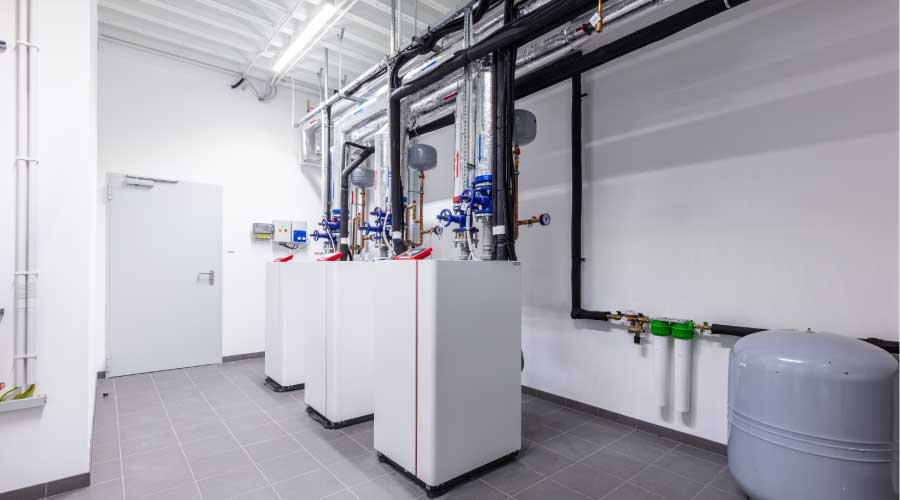 The city of Louisville's upgrades to its municipal buildings are projected to produce annual energy savings of $2.7 million, for a total of $56 million over 25 years, all in an effort to help the city reach its goal of cutting per capita energy use 25 percent by 2025.
The city of Louisville's upgrades to its municipal buildings are projected to produce annual energy savings of $2.7 million, for a total of $56 million over 25 years, all in an effort to help the city reach its goal of cutting per capita energy use 25 percent by 2025.Assessing Current HVAC Equipment
Assessing Louisville's municipal buildings based on their needs helped project managers and staff prioritize which buildings would receive energy efficient upgrades first.
Priorities and products
Putting together effective plans for such a large set of projects meant that managers and their staffs had to fully understand the condition of city buildings and systems so they could prioritize them in order to work efficiently.
“Our mechanical engineer, along with Mark and our maintenance folks, prioritized every location and concluded what would be the best bang for the buck — which locations or facilities would really benefit and help us with energy efficiency, as well as getting our mechanical systems updated,” Duncan says.
Zoeller says the partnership with the performance contractor was essential in prioritization process.
“They came in and did a whole audit of our systems,” he says. “Then facilities management, along with our office of management and budget, looked at every project — the potential improvement and the payback. They identified some great projects, and several of them we were able to get done, and several of them just didn’t have paybacks that made sense. We were very involved from the audit through prioritization, and obviously you have to be very hands on in the implementation.”
Zoeller and his staff also had a hand in selecting the new equipment that would be installed as part of the upgrades.
“We looked at everything from libraries to jails, and there was a lot of specialty equipment that was involved,” he says. “Our staff, along with the maintenance staffs of the individual agencies, were involved in reviewing submittals and were part of the overall construction and implementation.”
Related Topics:














